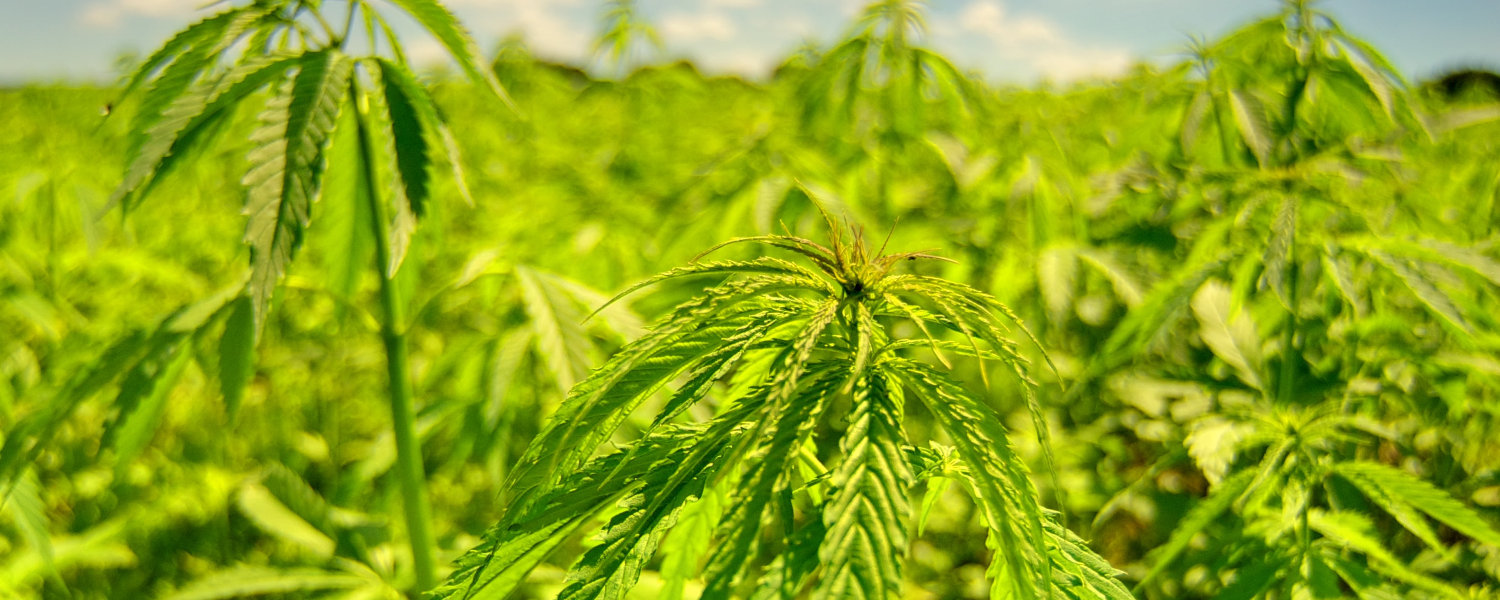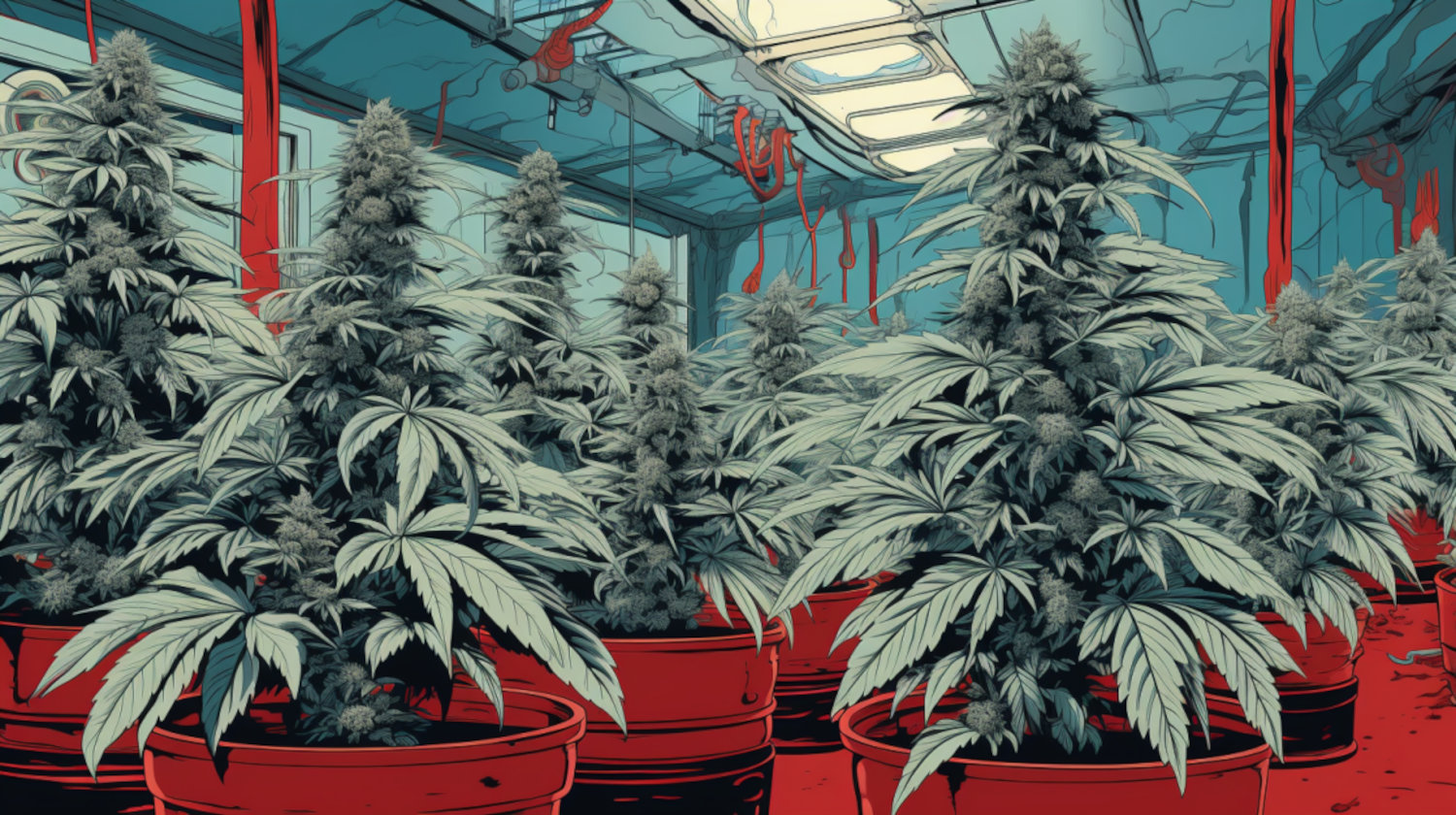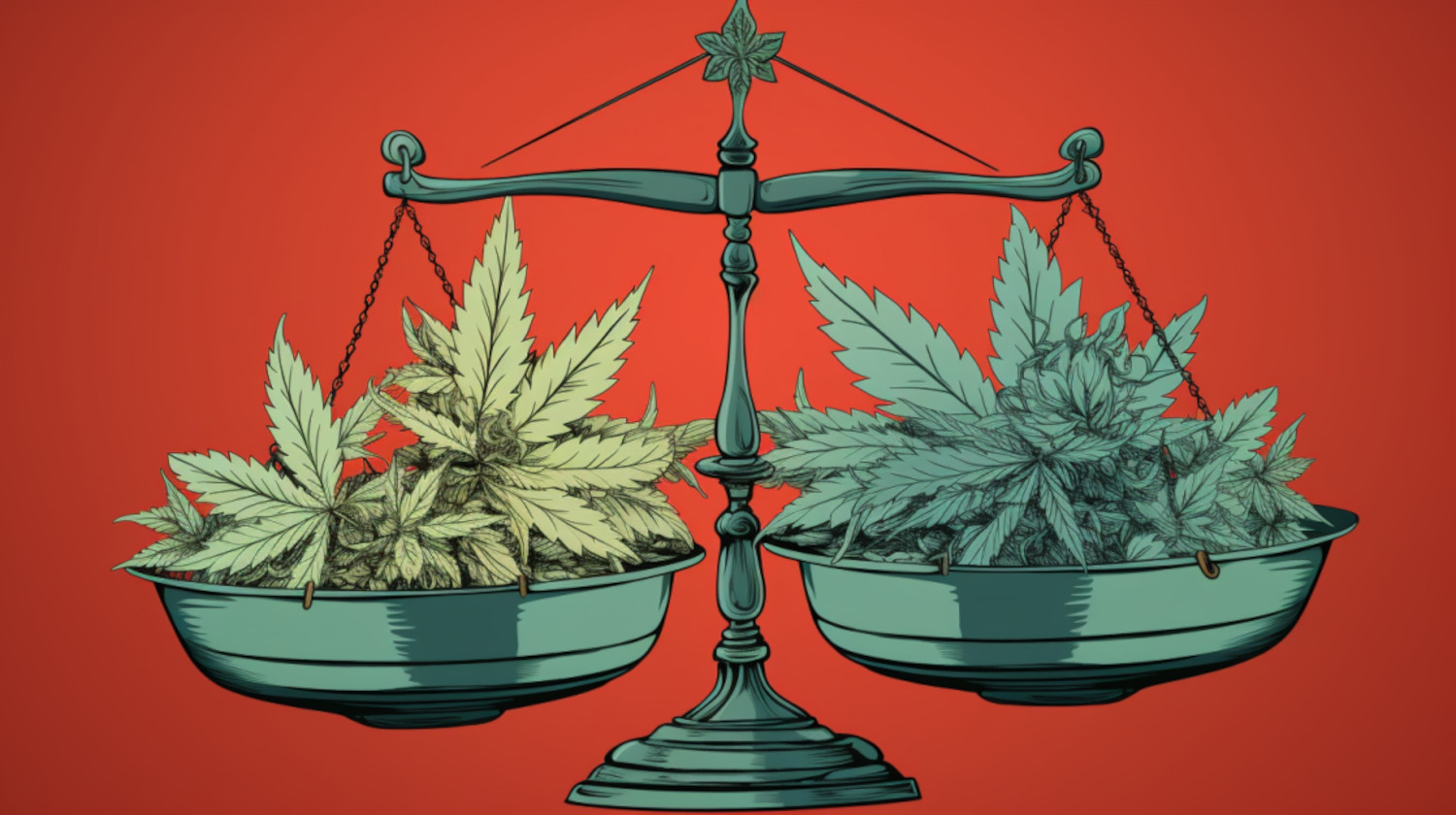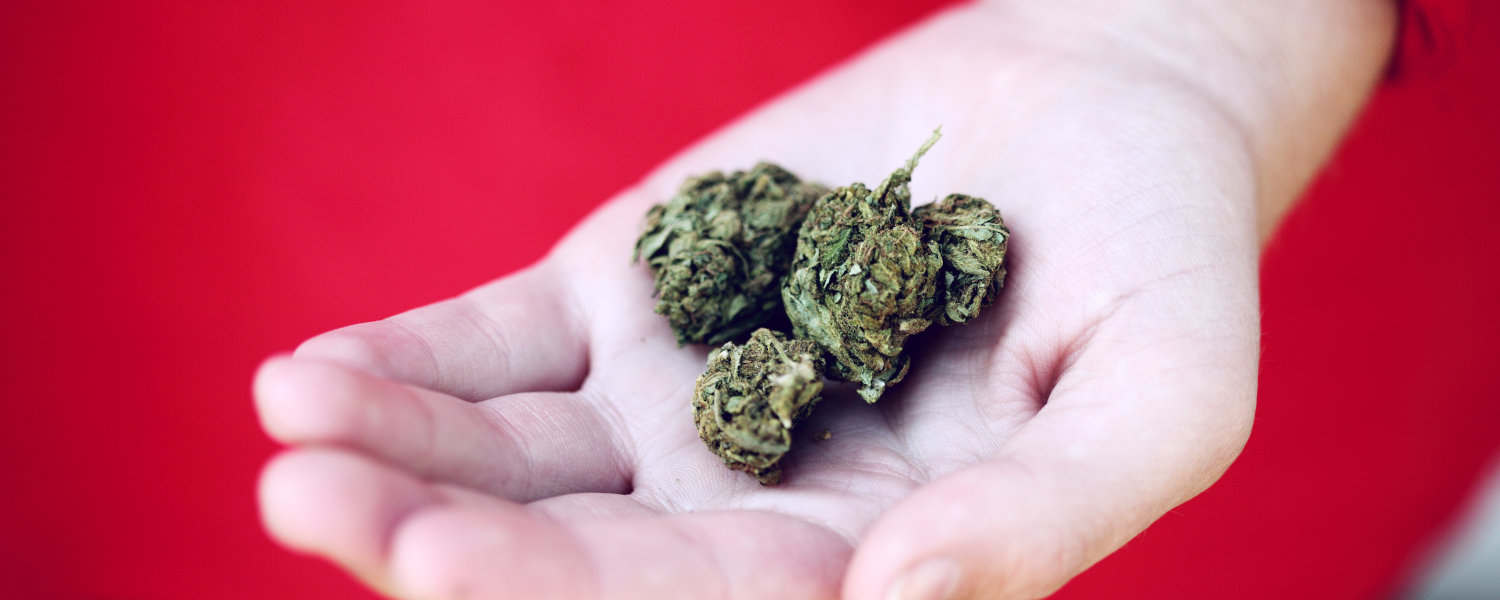Have you ever seen cannabis growing naturally on its own in the wild? Perhaps like a weed?
If you have, you've run into the natural wonder known as ditch weed.
Sometimes known as feral or wild cannabis, ditch weed may seem appealing. Ditch weed can also be considered a type of Cannabis ruderalis, which is how the autoflower variety was bred.1 This has many consumers wondering if they can smoke the wild-growing plant.
Who wouldn't want free cannabis, just growing in the wild? However, there are very good reasons to avoid ditch weed; once you know them, the question won't cross your mind again.
What Does Ditch Weed Look Like?
You don't get the name feral cannabis without living up to the title. Feral cannabis is often strong and able to withstand the elements.
Ditch weed is often tall and slim, typically resembling your run-of-the-mill sativa plant. With similar characteristics, novices may find themselves confused when they spot a very green, weedy-smelling plant popping up in nature. It isn't until you dig into the plant's genetics that you'll see the key differences (more on that in the next section).
Cultivated cannabis, whether licensed or not, grows in organized indoor or outdoor grow plots. Feral cannabis springs from cannabis or hemp seeds blown about by nature and grows in a manner that lives up to the name: wild and unkempt. These plants aren't growing for the sake of cultivation or fertilization. Instead, they're there because nature brought the seeds to that point.
More specifically, it was nature combined with U.S. regulations...
Is Ditch Weed Legal?
Reports of wild-growing cannabis date back to Scythia (now Ukraine) in 440 BC. The origins of the term "ditch weed" began when America briefly allowed hemp production during World War 2. With the effort focused on Midwest growers, hemp production flourished in states like Indiana, Iowa, Nebraska, and others. As such, these regions are now hotbeds for feral weed.2
Its legality is a bit unclear even today. Ditch weed continued to grow despite the U.S. prohibiting hemp production once again several decades ago. The DEA began tracking and identifying the plant, but stopping its production has never been possible.
While it isn't illegal to use feral weed in some places, growing any cannabis remains illegal unless your state has some home cultivation regulations. Some may also think ditch weed is fine since it is a hemp-based product and covered under the 2018 Farm Bill that allowed hemp production. But, there is no clear indication if it falls under the rule. Still, with no one able to grow it, there's little concern over its legal status.
Ditch Weed vs Cultivated Weed
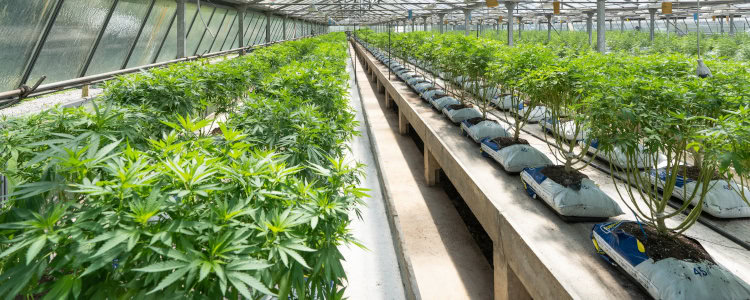
They may look a bit like one another, but a world of difference exists between ditch weed and cultivated cannabis.
While they both originated from the cannabis plant, the two aren't the same. Ditch weed is a type of ruderalis that exhibits one or more unique characteristics: similar CBD and THC levels, wild-type morphology, and early flowering (sometimes referred to as autoflowering). Many instances of ditch weed in the U.S. come from industrial hemp seeds that began to spread after the war efforts in America. That means you're most likely looking at hemp, not high-THC cannabis, out in those ditches or wherever it may be popping up across the Midwest.
That isn't the case with intentionally cultivated cannabis. These products are bred specifically for their plant profiles. These days that often includes a high THC concentration or, if hemp, a high CBD concentration. Other cannabinoids being bred for also include CBGA (CBG) and THCVA (THCV).
Even if you can't always tell them apart visually, you'll notice the difference once you start consuming (if you choose to do so). With cultivated cannabis, you will almost certainly feel the effects, including the classic "high" or intoxicating effects. Ditch weed is more likely to produce a feeling similar to any low-dose CBD product, where you subtly feel the effects in the body.
Feral cannabis typically contains low cannabinoid content. Even calling it a CBD strain would be a stretch with today's cultivators capable of producing high-potency CBD profiles. But still, ditch weed does contain CBD and numerous terpenes that play a part in creating pleasurable or beneficial effects… though consuming it still isn't recommended.
Can I Smoke Ditch Weed?
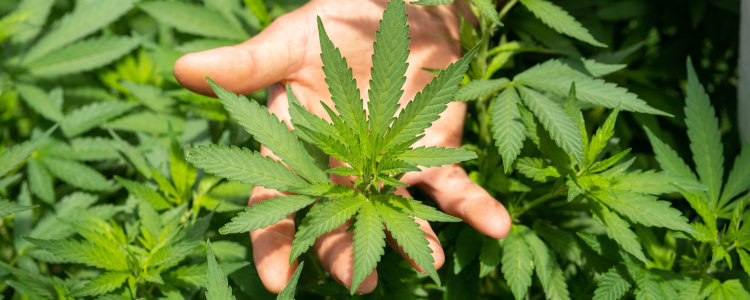
You technically can smoke ditch weed. Should you smoke ditch weed? That may be the better question.
For starters, ditch weed doesn't deliver much benefit.
Ditch weed typically does not produce flowers like your standard female cannabis plant due to the growing conditions and genetics, so you are not likely to get high so any THC enthusiasts or medical patients looking for symptom relief won't have a need for ditch weed. And with regulated producers creating high-quality, potent CBD products, the use of low-dose, minimal cannabinoid, feral cannabis is unnecessary and only serves to provide consumers with a lower quality, often harsher smoking experience.
Realistically, there's no reason to use ditch weed. It doesn't contain the THC levels that recreational users or medical patients are looking for, and for what CBD it does contain, it's much easier to find high-quality, federally-legal, lab-tested CBD products at your local dispensary.
Are There Risks to Using Ditch Weed?
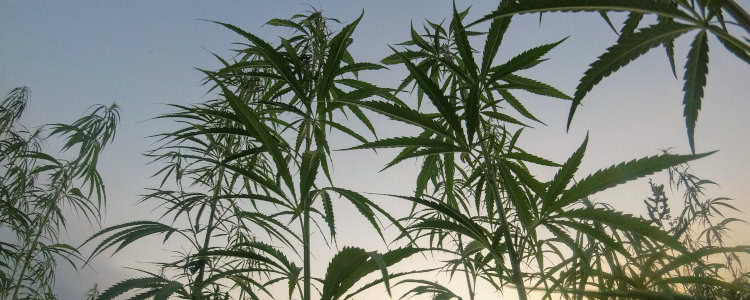
It should seem like common sense, but there are always risks when you consume something found on the side of the road.
With ditch weed, you're looking at using untested, unregulated products. That may make it sound like any other illicit market product, but you'd be mistaken. Even if illegal products are grown and produced without regulations, they are made with the cultivators' love and care.
That is far from the case with ditch weed. With the feral variety, you're not only consuming untested products; you're using items that weren't even monitored during their growing season.
Cannabis plants are well-known bioaccumulators. It might sound complicated, but bioaccumulators are organisms that can absorb and accrue chemicals or substances from their environment. It's the same mechanism responsible for high mercury levels in large fish like tuna.3
If heavy metals or other contaminants are present in the soil where ditch weed grows, those contaminants can accumulate in the plant, including the smokable flower.4 Ingesting high concentrations of heavy metals is unsafe, and there's no telling what ditch weed picks up on the side of the road or even in the wild.
As such, consumers run a series of risks when consuming ditch weed, including:
- Accumulation of heavy metals and other contaminants
- Untested products
- Uncertain potency
- Uncertain plant profiles (e.g., cannabinoids, terpenes, etc.)
- Vague legal status/Possible legal concerns
There is also the possibility that you may be running into a truly off-the-radar grow operation. While most unlicensed operators work on farms or facilities, some have planted their cannabis wherever possible. If you've stumbled upon someone else's grow – even if they're growing it out in the open – you're running a risk by taking it. At the very least, you're consuming cannabis that wasn't meant for you. Much worse, you could be stepping into a nefarious operation with folks who won't be happy you took from them.
Final Thoughts on Ditch Weed
You may find yourself confused about the difference between ditch weed and "mids" or lower-quality cannabis flowers. If you find yourself in that position, perform a quality check to see what you've got on your hands.
Start by looking at the plant itself. While ditch weed does contain terpenes and some cannabinoids, it's improbable to have the icy trichome-rich look of cultivated bud. And it likely won't contain the vibrant colors some strains produce, like orange and purple. If you are still uncertain, it's best just to leave it alone. Smoking ditch weed is a high-risk, low-return idea.
Not only are there concerns about product purity, potency, and flavor, but you may want to tread lightly with ditch weed for legal reasons. At the same time, it is likely covered under the law, but that may not always be true. Some states continue to crack down on all things cannabis, though that number drops every year. With ditch weed largely undefined in state or federal legislation, law enforcement could arrest a person if they felt inclined.
Rather than turning to the literal ditch for your cannabis, getting a medical card can help you access more dispensaries and higher-quality, lab-tested products.
Sources:
- Lapierre É, Monthony AS, Davoud Torkamaneh. Genomics-based taxonomy to clarify cannabis classification. Genome. 2023;66:201-211. Published online May 10, 2023. doi:https://doi.org/10.1139/gen-2023-0005 ↩︎
- McPartland JM, Guy GW. Models of Cannabis Taxonomy, Cultural Bias, and Conflicts between Scientific and Vernacular Names. The Botanical Review. 2017;83(4):327-381. doi:https://doi.org/10.1007/s12229-017-9187-0
↩︎ - Stamatis N, Kamidis N, Pigada P, Stergiou D, Kallianiotis A. Bioaccumulation Levels and Potential Health Risks of Mercury, Cadmium, and Lead in Albacore (Thunnus alalunga, Bonnaterre, 1788) from The Aegean Sea, Greece. Int J Environ Res Public Health. 2019;16(5):821. Published 2019 Mar 6. doi:10.3390/ijerph16050821 ↩︎
- Ćaćić M, Perčin A, Zgorelec Ž, Kisić I. Evaluation of heavy metals accumulation potential of hemp (Cannabis sativa L.). Journal of Central European Agriculture. 2019;20(2):700-711. doi:https://doi.org/10.5513/jcea01/20.2.2201 ↩︎
The information in this article and any included images or charts are for educational purposes only. This information is neither a substitute for, nor does it replace, professional legal advice or medical advice, diagnosis, or treatment. If you have any concerns or questions about laws, regulations, or your health, you should always consult with an attorney, physician or other licensed professional.

